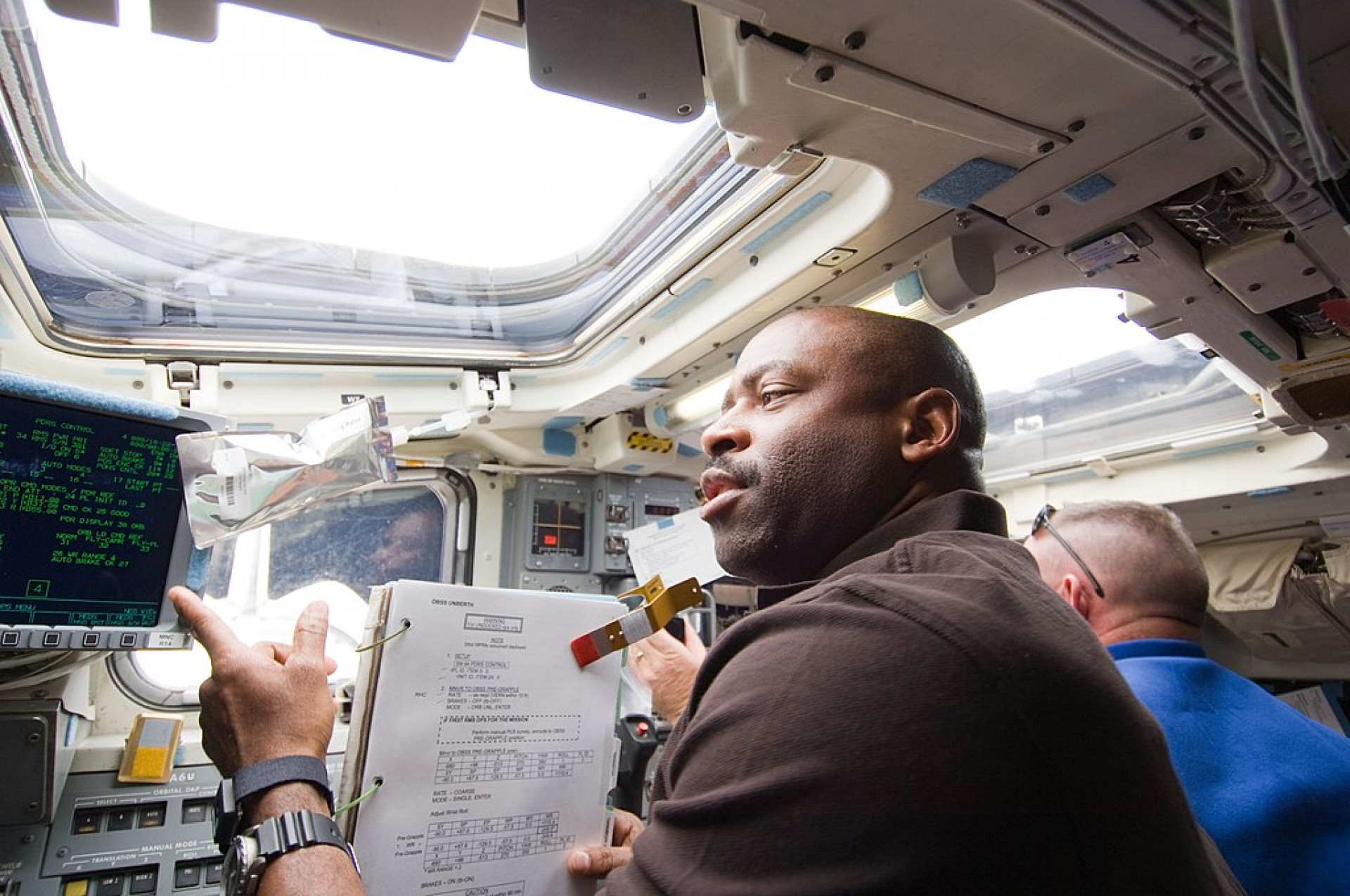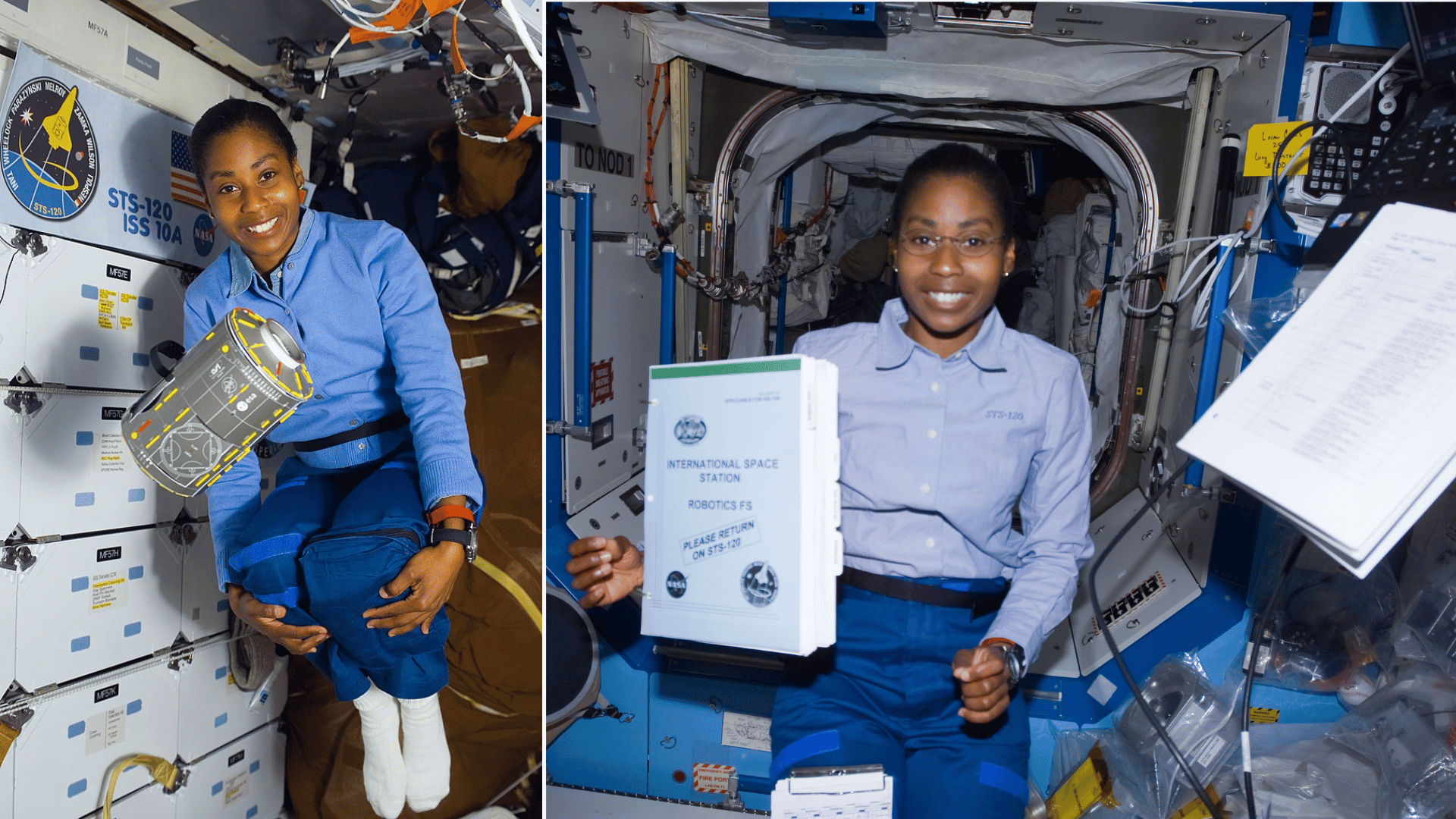It is Black History Month, and Interesting Engineering (IE) is here to honor the triumphs of Black scientists and engineers over the 21st century, including all those who have channeled their skills to travel into space. The accomplishments of space exploration as we know them would not have been possible without the contributions of the astronauts listed below.
From leading space shuttle flights to launching and landing satellites, we highlight the achievements of a number of Black astronauts. Discover Black astronauts you may not have known about, who have carried out, or continue to carry out, spacewalks, repairs, scientific and technology research, as well as piloting and commanding space shuttle operations as expedition crewmembers.
Here is a list of 11 world-class Black astronauts who have traveled into space, plus Aku – the world's first NFT artwork to do so. Astronauts have been listed in order of their launch into the cosmos (starting from the earliest).
Michael P. Anderson (2003)

NASA/Robert Markowitz
Last traveled into space: February 1, 2003, aboard the Space Shuttle Columbia on mission STS-107
Total time in space: 24 days, 18 hours, 08 minutes
Space missions: STS-89, STS-107
Michael P. Anderson declared his desire to become an astronaut when he was just four years old, creating many scale models of rockets and planes strung from his bedroom ceiling with an invisible wire.
After receiving a master's degree in physics, he had a distinguished career in the U.S. Air Force. His technical roles there enabled him to become the first African American in space in 1998 during the Endeavor Space Shuttle mission.
On mission STS-107 of the Columbia, NASA's oldest shuttle, Anderson served as a payload commander and lieutenant colonel in charge of scientific investigations. Sadly, he was one of the seven astronauts whose lives were cut short when the space shuttle exploded over Texas 16 minutes before it was supposed to touch down on February 1, 2003.
Robert Curbeam (2006)

NASA on The Commons/ Wikimedia Commons
Last traveled into space: December 9, 2006, aboard the Space Shuttle Discovery on mission STS-116
Total time in space: 37 days, 14 hours, 33 minutes, 23 seconds
Space missions: STS-85, STS-98, STS-116
Robert Curbeam was a graduate of the Naval Academy and a Naval flight officer, test pilot, and instructor before joining NASA in 1994. He has also earned two master's degrees: Aeronautical Engineering and Astronautical Engineering. With his four spacewalks on the STS-116 mission, Curbeam presently holds the record for the most spacewalks in a single spaceflight accomplished during the STS-116 mission to the International Space Station (ISS).
During his tenure with NASA, he served on three space shuttle missions and seven spacewalks in total. Curbeam significantly contributed to delivering and testing technologies vital for developing the ISS from roles such as deputy director of flight crew operations and spacecraft communicator.
Joan Higginbotham (2006)

NASA/Wikimedia Commons
Last traveled into space: December 9, 2006, aboard the Space Shuttle Discovery on mission STS-116
Total time in space: 12 days, 20 hours, 45 minutes
Space missions: STS-116
Joan Higginbotham has a master's in management science and in space systems. She began her career as an aerospace technologist at the Kennedy Space Center (KSC), where she actively participated in 53 space shuttle launches.
Following that, she embarked on a 20-year career with NASA, leveraging her pioneering electrical engineering skills in various technical roles. This included operating the Space Station Remote Manipulator System (SSRMS) – a robotic arm at the ISS – where she logged over 308 hours in space during her mission with the crew of STS-116.
STS-116 was launched by the Discovery space shuttle on December 9, 2006. At that point, Higginbotham became the third African American woman to journey to space, after Mae Jemison and Stephanie Wilson.
Leland D. Melvin (2009)

Lyndon B. Johnson Space Center
Last traveled into space: November 16, 2009, aboard the Space Shuttle Atlantis on mission STS-129
Total time in space: 23 days, 13 hours, 28 minutes
Space missions: STS-122, STS-129
Leland Devon Melvin is a retired NASA astronaut with a master's degree in materials science. He began working for NASA in 1989 as a researcher in the Fiber Optic Sensors group at NASA Langley Research Center. He was selected for astronaut training in 1998.
He worked as a mission specialist on STS-122 of the Space Shuttle Atlantis, which is best known for delivering and installing the Columbus (ISS module) for the European Space Agency. He also served as mission specialist 1 on STS-129.
Prior to joining NASA, Melvin was a wide receiver on the University of Richmond football team. He was chosen by the Detroit Lions in the 1986 NFL Draft as a wide receiver. However, during training camp, he pulled a hamstring and was released from the team. The following year he was picked up by the Dallas Cowboys but again pulled a hamstring, ending his professional football career. However, he remains the only person ever selected by the NFL who has been in space.
Robert Satcher (2009)

NASA
Last traveled into space: November 16, 2009, aboard the Space Shuttle Atlantis on mission STS-129
Total time in space: 10 days, 19 hours, 16 minutes
Space missions: STS-129
Robert Lee Satcher Jr. is an American physician, chemical engineer, and former NASA astronaut. He holds a Ph.D. in chemical engineering from MIT and an M.D. from Harvard Medical School. Before being selected by NASA for astronaut training in 2004, Dr. Satcher worked as an orthopedic surgeon and was a prominent specialist in Musculoskeletal Oncology.
In 2009, he became the first orthopedic surgeon in space during NASA's STS-129 mission, where he was a mission specialist and performed two spacewalks.
Stephanie Wilson (2010)

Lyndon B. Johnson Space Center 1/ 2
Last traveled into space: April 5, 2010, aboard the Space Shuttle Discovery on mission STS-131
Total time in space: 42 days, 23 hours, 46 minutes
Space missions: STS-121, STS-120, STS-131
After graduating from Harvard, Stephanie D. Wilson attained a master's degree in aerospace engineering and is a veteran of three spaceflights: STS-121 in 2006, STS-120 in 2007, and STS-131 in 2010. After Mae Jemison, she is the second African American woman to go into space.
Wilson has been chosen as one of the 18 astronauts that will make up NASA's Artemis team, which will attempt to return to the Moon in 2024. This mission will send the first woman to walk on the lunar surface.
Alvin Drew (2011)

Lyndon B. Johnson Space Center
Last traveled into space: February 24, 2011, aboard the Space Shuttle Discovery on mission STS-133
Total time in space: 25 days, 13 hours
Space missions: STS-118, STS-133
Benjamin Alvin Drew holds two master's degrees – one in aerospace science and another in political science. He graduated from the United States Air Force Academy and served in the U.S. Air Force as a combat pilot, test pilot, and command pilot, with more than 3,500 hours of flight time piloting 30 different types of aircraft before joining NASA in 2000.
As a former NASA astronaut, he has been on two space missions to the International Space Station, STS-118 and STS-133; the latter being the Space Shuttle Discovery's 39th and final mission. During this mission, Drew became the 200th person to perform a spacewalk. While docked at the station, he took part in two spacewalks in total.
Victor J. Glover (2020)

NASA
Last traveled into space: November 15, 2020, aboard the Crew Dragon Resilience on SpaceX Crew-1 expedition
Total time in space: 167d 06h 29m
Space missions: SpaceX Crew-1 (Expedition 64/65)
Victor Jerome Glover holds several degrees, including a master of science degree in flight test engineering, a master of science in systems engineering, and a master of military operational art and science. Before being selected as a NASA astronaut in 2013, he was a Naval Aviator and test pilot.
He was a pilot on the first operational flight of the SpaceX Crew Dragon to the International Space Station.
Glover will spend more than six months as a crew member on ISS Expeditions 64 and 65 as part of the SpaceX Crew Dragon mission to the International Space Station. During Expeditions 64, he conducted four spacewalks. He is the first African American ISS Expedition crewmember to live on the space station rather than just visit it briefly.
Sian Proctor (2021)

Dr. Sian Proctor/Wikimedia Commons
Last traveled into space: September 16, 2021, aboard the Crew Dragon space capsule on mission Inspiration4
Total time in space: 2d 23h 3m
Space missions: Inspiration4
Sian Proctor is a commercial astronaut from the U.S. who possesses a Ph.D. in science teaching and a master's degree in geology. She is also a geology professor and science communicator.
On September 15, 2021, she was launched into Earth's orbit as the pilot of the Crew Dragon space capsule. This mission was the Inspiration4 private orbital spaceflight – the first all-civilian human spaceflight mission. As the pilot on this mission, Proctor became the first African American woman to pilot a spacecraft.
Jessica Watkins (2022)

NASA/ Wikimedia Commons
Last traveled into space: April 27, 2022, aboard the Crew Dragon space capsule Freedom on SpaceX Crew-4 expedition
Total time in space: 170 days, 13 hours, and 3 minutes
Space missions: SpaceX Crew-4 (Expedition 67/68)
Jessica Andrea Watkins is an American NASA astronaut, geologist, aquanaut, and former American national rugby player who earned a Ph.D. in geology. She has worked at NASA’s Ames Research Center and NASA’s Jet Propulsion Laboratory.
While a postdoc fellow at CalTech, she worked on planning for the Mars rover Curiosity, where she participated in the daily planning of its activities to investigate the geology of Mars.
Watkins was selected by NASA in 2017, and in April 2022, she became the first Black woman to finish a long-duration mission aboard the International Space Station. As well as her duty in studying and documenting geological changes on Earth and space, Watkins will observe the effects of long-duration spaceflight on humans.
Watkins has also been selected to be a part of the Artemis team, which is a mission scheduled to return humans to the Moon in 2025.
Aku (2021)
Aku has Orbited the Earth!!
When I was first approached about this opportunity I had no idea the amount of effort it required from complete strangers to make this all possible.
But, their dedication to @AkuDreams is incredibly inspiring and I’m so grateful! https://t.co/nya6FAtfUK
— Micah Johnson ????????? (@Micah_Johnson3) August 4, 2021
Last traveled into space: July 28, 2021
If you hadn't noticed already, all the aforementioned astronauts are American – and human. But let's quickly talk about Aku, who lives in the metaverse and is therefore breaking ground across all geographical localities.
Described as a young Black astronaut with a huge helmet, Aku was introduced to the world as an NFT (Non-Fungible Token). He was created in response to former major league baseball player, Micah Johnson, hearing his four-year-nephew ask his mother: "Can astronauts be Black?"
On July 28, 2021, Aku, along with an authentic digitalization of the original flag Buzz Aldrin wore on his 1969 lunar mission, traveled more than 125,000 miles in space, including one orbit of the Earth aboard the International Space Station. This launch represented the first-ever transmission of NFT artwork to outer space.
It also stood for a much bigger mission that fostered equitable access to fulfilling one's dreams.




